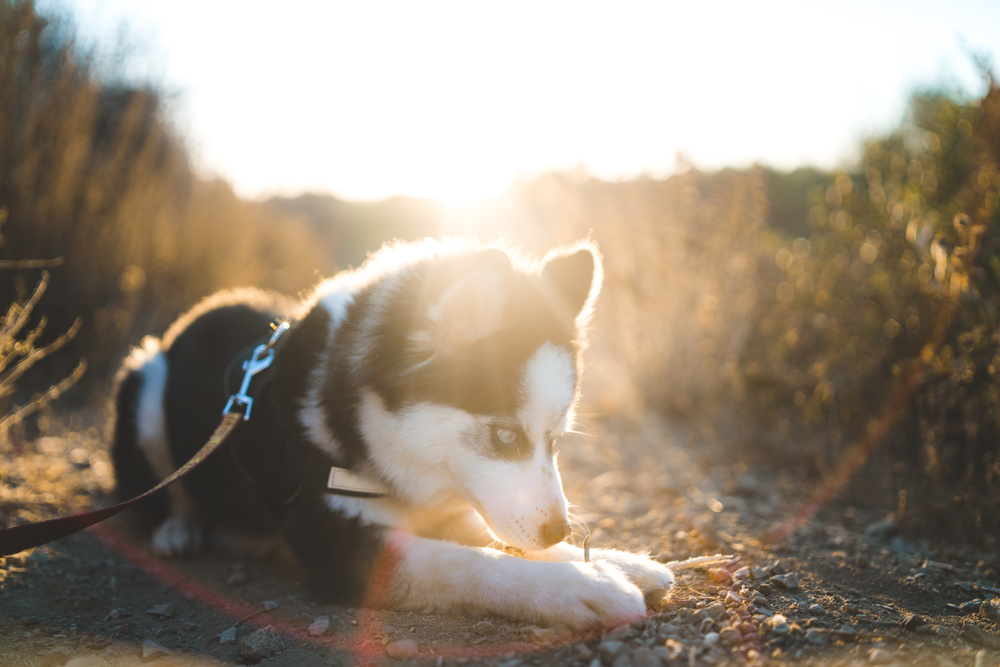Pomskies are designer dogs made from a mix of pure Pomeranian and Siberian husky breeds. While they generally look similar, they may vary in size depending on which breed becomes dominant. However, it’s common for Pomskies to grow smaller than their snow dog origins, making them a popular pet choice for those who prefer smaller breeds.
Aside from their characteristically fluffy coats and small stature, Pomskies also have an innate friendliness and playfulness. They’re known for getting along well with people and other dogs, making them ideal pets for families.
Some pet owners may encounter challenges when training their new Pomsky pet. As cute as Pomskies are, they can be stubborn and challenging to train, especially for newbie fur parents. As intelligent as this breed is, they can also display aggression under exceptional circumstances.
If you’d like some tips for eliminating bad behaviours in Pomskies, continue reading this article:
Examples Of Aggressive Behavior In Pomskies
Many first-time Pomsky owners wonder if this small dog breed can become aggressive at some point. To answer this question, experts believe any dog can resort to aggression under threatening or uncomfortable circumstances. Because of this, they emphasize the importance of proper dog training, especially for those who have yet to become familiar with the Pomskies breed.
Here are some examples of aggressive behavior in Pomskies that would-be fur parents should prepare for:
- Excessive barking
- Destructive behaviors, including chewing on valuables, scratching surfaces, or digging around the house
- Attention-seeking behaviors, including jumping on people, nudging, pulling, and whining
- Hyper-active behavior, such as eating too fast or running around the house
- Aggression towards humans and animals, especially younger children, including growling and biting
These behaviors cause not only inconvenience to the fur parents but can also bring serious harm, especially if the dog inflicts injury on people and other animals. In these cases, it is highly recommended to seek the help of a professional dog trainer and a dog bite attorney to ensure the safety of everyone in the household. Because of this, pet owners need to seek intervention immediately before a Pomsky becomes a real threat to itself and those around it.
Tips To Curb Aggressive Behavior In Pomskies
Many dog breeders believe that combining Pomeranian and Siberian Husky traits causes Pomskies to be predisposed to aggressive or disruptive behavior. For one, Pomeranians are known for being vocal and boisterous, whereas Huskies have intense energy and struggle with being left alone.
Pomskies may become aggressive due to their genetics, though dog behaviorists also believe that early training can help them adjust to domestic life and learn positive behavior as puppies.
As a fur parent, what should you do if you observe any of these behaviors in your pets? Here are some expert tips you may find helpful.
- Consult With Your Veterinarian
Dogs may display unusual or aggressive behavior when in physical pain or discomfort. It may be their way of coping with the distress they’re experiencing, which is why one of the first steps you can take to address aggression is to visit your veterinarian.
Aside from possible health problems, your vet can advise if adjustments should be made to your dog’s diet. Sometimes, nutritional changes can help dogs feel calmer, more relaxed, and comfortable, improving their mood and behavior.
- Document Your Dog’s Aggressive Behaviour
You’ll need to observe your dog’s display of aggression and document as many details as possible. This way, you can take note of the potential triggers that encourage harmful behaviors and make adjustments as needed.
For instance, you may observe more aggression in your Pomsky around other dogs. You can document incidents by recording a video or writing down your observations. Then, consider what you can change to make your dog feel calmer and more comfortable when interacting with other animals.
- Seek Behavioural Intervention
If you’re new to caring for Pomskies, it may be best to ask for professional assistance regarding aggression. Doing so, you’ll be able to prevent physical injury for both you and your fur baby. Also, you can avoid any untoward incidents involving other household members.
You can consider hiring a dog trainer or behavioral specialist who can assess your dog’s aggression and share behavior modification techniques that you can do at home. The therapist can also ask you to adjust the dog’s daily schedule or home environment to help it improve its behavior toward others and minimize aggressive tendencies.
Conclusion
Caring for a Pomsky can be a fun, rewarding experience for dog lovers. However, it’s essential to be prepared for its unique needs, including obedience and house training. You’ll also need to consider if the animal has health issues that may affect how it relates or interacts with other members of your household. With proper training and care, you can ensure that your beloved fur baby can adequately adjust to daily life with you and your loved ones.


